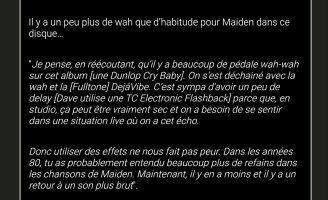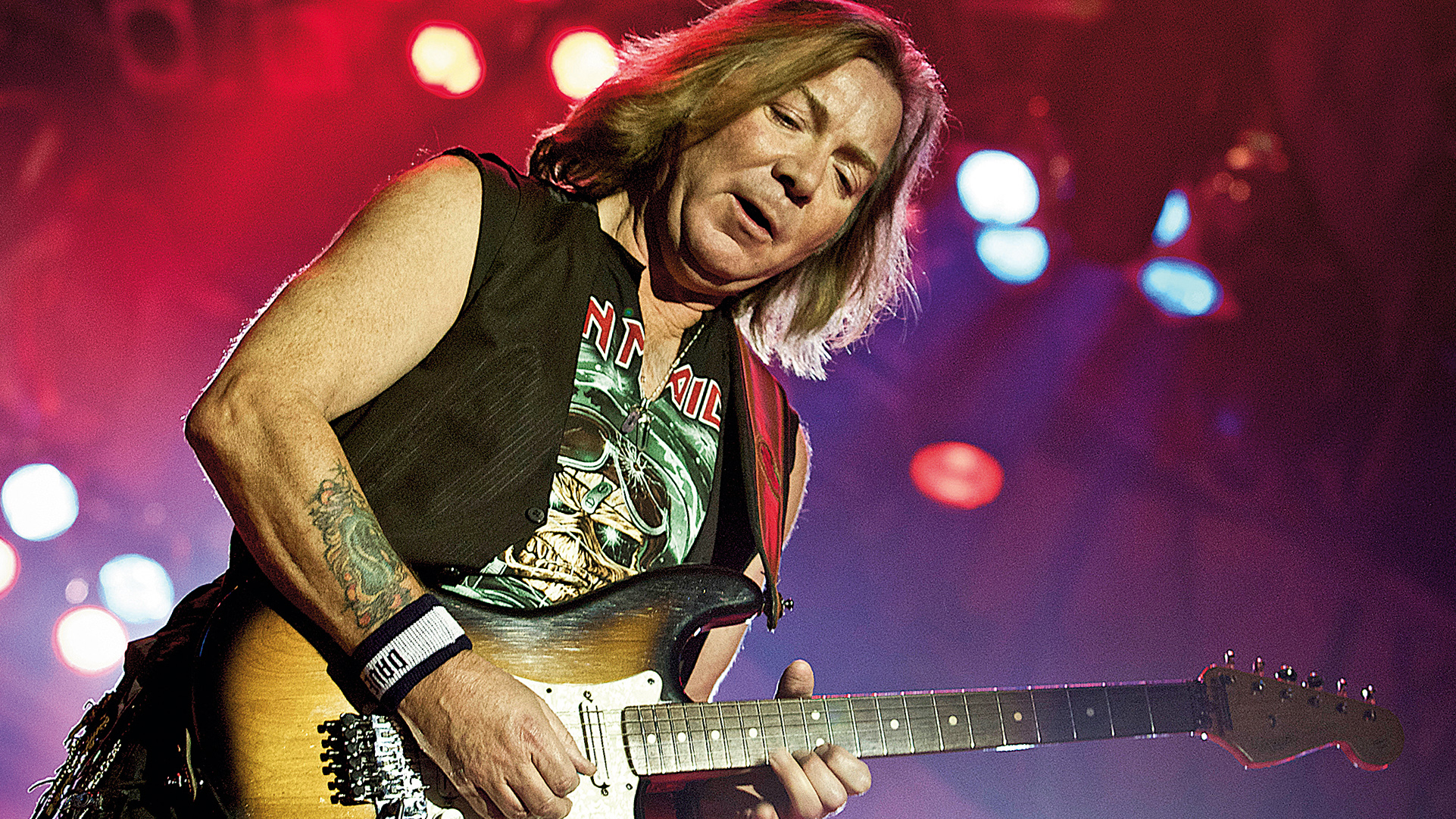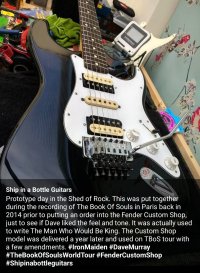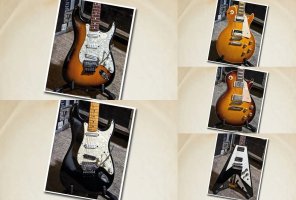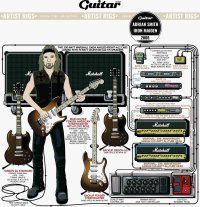On previous albums, we’ve usually gone into a rehearsal room for maybe a couple of weeks and maybe have four or five songs under our belts. Then we’d go into the studio and start recording, and the rest of the material would be written while we were there. But this time, we went in there with a blank page and a bunch of ideas. After we had several songs and it was over the hour mark anyway, we kind of said, ‘Okay, it looks like it’s going to be a double album…’ It was fantastic, but we stopped there – otherwise we would have been in for three or four albums.
Everything was kind of channelled through Steve. He would listen to people’s ideas and then he’d start putting pieces together and forming them into shape.
A lot of it was very spontaneous. Maybe we’d just run through it a couple of times and if it had a really good feel, then we’d keep it. Other things, obviously the complex sections, took a bit more time to work on, with all the time changes. But it was a really fun experience because it keeps you on your toes. You have to be really sharp.
Over the years, I’d go over to his house or we’d work on songs in a hotel room. But on this album, we gave Steve our ideas on a CD and then he’d take them away, listen to them and maybe rearrange parts. He might write some lyrics and add melodies, but Bruce wrote a lot of the lyrics as well. Sometimes, he might leave the whole demo as it was. It’s a good way to collaborate, because sometimes it takes a few listens when you’re showing somebody an idea. Sometimes, Steve will come up with a vocal melody immediately and be inspired that way. Other times, he’ll take stuff back and work on it. Sometimes in the studio you need to go to a quiet spot and sit down and think about things, as opposed to all the distractions that are going on. On this album, we gave Steve our ideas and he might splice them up after listening to them back. Then we’d listen back to the reinterpretation, start writing down what the chords were and Nicko would be listening so we could run through it and start recording. It was a lot quicker in terms of putting down the tracks. It’s about capturing the performance. But from the original demo idea to the true recorded performance, there are quite a lot of changes that occur.
If one of the other guys is doing a solo, maybe you’ll hear a bit of it during the playback, but usually, you’ll cut in three or four seconds before your solo starts and just jump in. But you won’t really hear anything much, so I was pleasantly surprised when I heard the album – what Adrian and Janick had played that I hadn’t heard before – because we’d go in individually with Kevin and work on little parts like that. So it’s exciting to hear the finished product.
That always tends to be the case, because it’s fresh and spontaneous. On this album, I didn’t really go in with any preconceived ideas; I didn’t work anything out in the hotel or anything. I was just kind of ‘go for it’ on most of the album. So I’d play some stuff and Kevin would say, ‘Yes, that sounds good.’ And sometimes it would be the first take, then other times, I’d do two or three different things and then go out and have a cup of coffee and Kevin would put all the bits together. Then I’d come back and listen to it and he’d ask, ‘What do you think of that?’ Then you have to go back and learn it for the tour. But that’s what the studio is for. The thing about editing and cutting pieces together is it can be done seamlessly now. Working with Kevin is great because his enthusiasm rubs off. You’re sitting in the control room next to him and he’s really excited and he’s really into it. He tends to bring out the best in everyone in the whole band, individually as well. There’s no hard and fast rules to the way we do things. If it sounds good and if we like it, we keep it. The rule of thumb is generally that the first take is the best. You could go on and play something that may be technically better, but it loses the feel.
I think I’ve always tried to be more spontaneous, but there were a few albums where I meticulously worked out everything before I went in: solos, melodies… I’d sit down and go over them. A few sections we’ve done, I’ve had to consciously sit down and work out because some of the chord sections were weird to play over – maybe jazzy – and it’d force me to go to places I wouldn’t normally go, which is healthy. I’ve tried to be spontaneous as much as possible. But sometimes you do have to sit down and consciously work out something, and then you can experiment.
I think, listening back, there’s quite a lot of wah pedal on this album [a Dunlop Cry Baby]. We were breaking out the wah and the [Fulltone] DejáVibe. It’s nice to have a bit of delay, too, because, in the studio, it can be really dry and you want to feel you are in a live situation where you have that hall echo that you can play off.So we’re not afraid of using effects. Back in the 80s, you’d probably hear a lot more chorus in Maiden songs. Now, there’s less and it’s back to being more raw. Sometimes, it’s all about what you leave out.
It’s nice that we can have three-guitar harmonies now, especially in a live situation. It’s been a natural evolution. When the three of us started playing together, we’d be playing the same chords but on different parts of the neck, and one of us might play clean while another plays something heavy. It’s teamwork when we play together, and it’s orchestrated that way. I think we inspire each other We don’t work at it that hard, but we sit down to make sure the intonation is there and it sounds good, that we’re not clashing. But most of the time, it works out very naturally. We’ll work out the intricate parts and nuances in the harmonies. It doesn’t necessarily mean it’s heavier because you’ve got three guitars, but it’s become more musical.
But doing a new album keeps us current and valid – it’s not just about playing the old songs. So it’s rewarding to go out and play the new songs, but by the same token, it’s also comfortable and fantastic when we’re playing the old stuff. There are a lot of memories there. But the new songs do keep you on your toes, so you’ve got to make sure you’ve got them well locked down before you go on stage.
With the Maiden material, although there’s a lot of heavy chord tones, there’s also a lot of cleans in between, so that Strat works perfectly. For what we’re doing, you can switch from a heavy part quickly to a clean at the push of a button. Because things are happening so quickly sometimes, you don’t have time to think, you have to act spontaneously.

